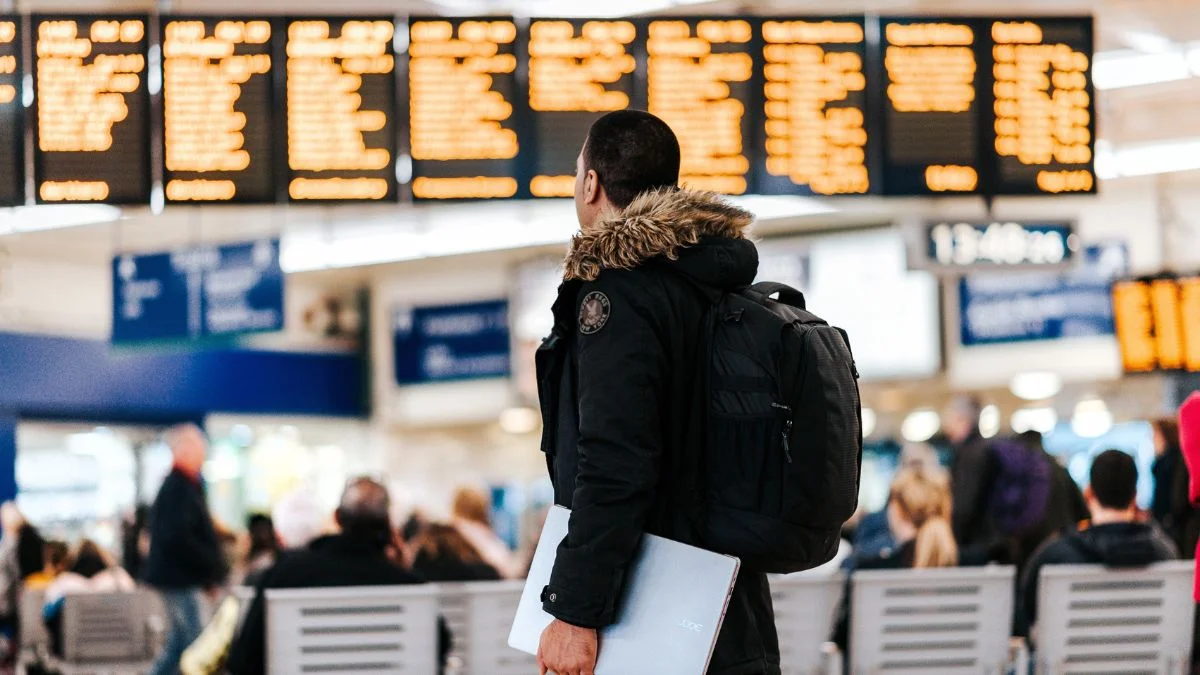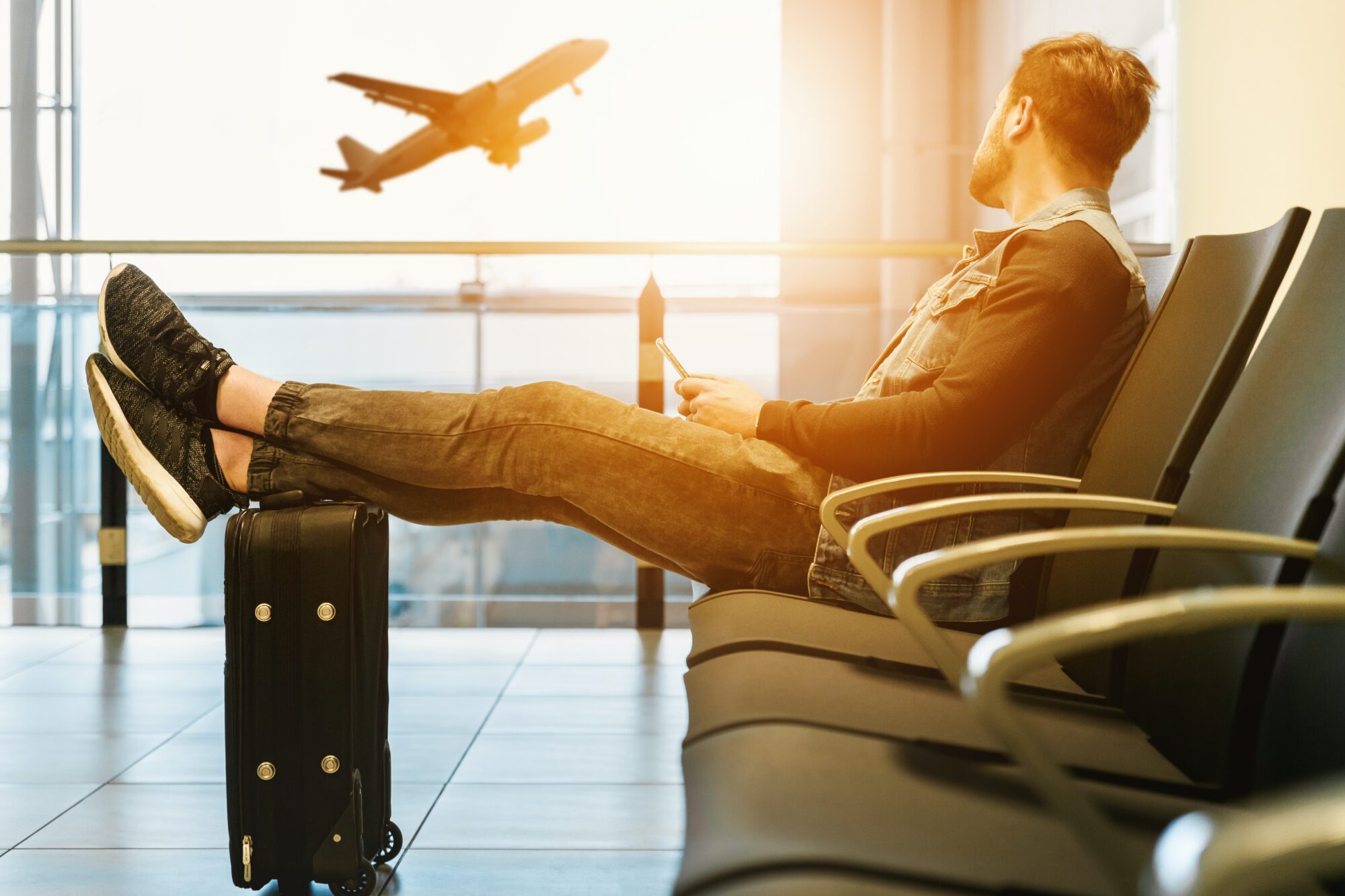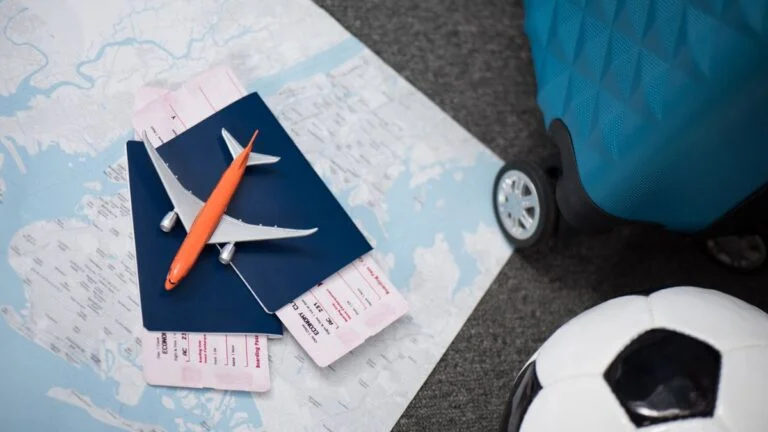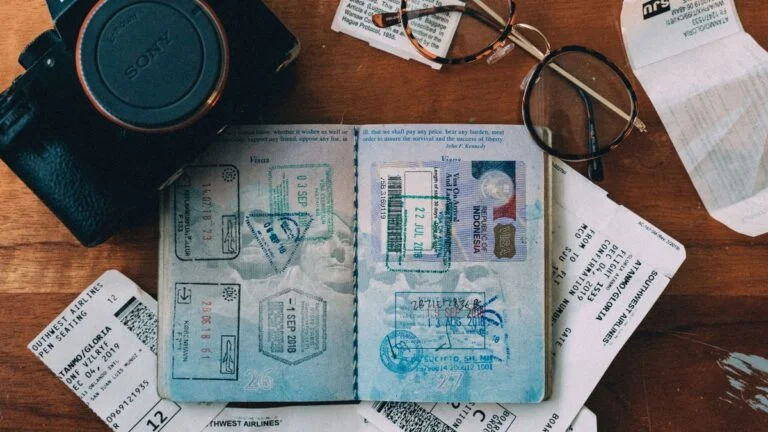Everything You Need to Know About Connecting Flights

As participants in Amazon Associates and other programs, we earn from qualifying purchases. This comes at no additional cost to you. For more details, see our Affiliate Disclosure.
Navigating the world of air travel can sometimes feel like piecing together a puzzle, and one of the trickiest pieces to fit can be connecting flights. Whether you’re a frequent flyer or embarking on a rare adventure, understanding the intricacies of layovers, transfers, and the process of catching a subsequent flight is key to a smooth journey.
HIGHLIGHTS
- Connecting flights often prove more cost-effective than direct ones, with airlines frequently offering special deals.
- They provide increased flexibility with more schedule choices and alternate routes.
- Layovers can enhance travel experiences, allowing exploration of new cities or offering a cultural immersion even within the airport.
- Frequent flyers can benefit by earning more miles and potentially achieving higher status tiers faster with connecting flights.
- Layovers offer an opportunity to rest and recover, breaking up long-haul flights.
- Connecting flights can increase the chances of baggage errors being corrected and offer more duty-free shopping options.
- Potential for seat upgrades might be higher on routes with layovers.
Dive into our comprehensive guide, and let’s demystify everything you need to know about connecting flights.
What is a Connecting Flight? – Defining the Basics
A connecting flight involves traveling from one destination to another through one or more intermediate stops, rather than a direct route. Here’s how it works:
- Booking: Often booked as one ticket, connecting flights may include different airlines.
- Stopovers: The layover can range from a brief stop to several hours, possibly requiring a change of planes.
- Purpose: These flights can save money or be the only way to reach certain destinations.
Connecting flights require careful planning, considering factors like layover duration and airport layout. But with knowledge and preparation, they can be a convenient travel option.
Do You Stay On The Same Plane For Connecting Flights?
Not always. Whether you stay on the same plane depends on the type of connection:
- Direct Flight with a Stop: The plane might land to refuel or drop off/pick up passengers. You remain seated.
- True Connecting Flight: You’ll disembark the first plane and board a different one during your layover.
Always check your itinerary. If you’re unsure, ask airline staff or consult your boarding pass. Being informed ensures a smoother transition between connections.
Connecting Flight Procedure
Navigating a connecting flight requires understanding the process:
- Arrival: Once your initial flight lands, follow the airport signs for “Connections” or “Transfer.”
- Boarding Pass: If you’ve received all boarding passes at the initial check-in, proceed to your next gate. If not, you might need to visit the airline’s transfer desk.
- Security and Customs: Depending on the country, you may need to pass through security or customs again, even if it’s just a layover.
- Gate Information: Monitor airport displays for gate details. They can change, so stay updated.
- Layover Activities: If time allows, explore amenities, grab a meal, or rest.
- Boarding: Arrive at the next gate with ample time. Listen for announcements regarding your flight.
Remember: Keep essential documents handy, and be mindful of time to ensure a stress-free connection.
Navigating Airport Terminals: Tips and Tricks
Efficiently moving through airport terminals can ease the stress of travel:
- Maps: Familiarize yourself with the airport layout. Many airline apps and airport websites offer terminal maps.
- Signage: Follow clear signs for gates, transfers, and amenities. They’re designed to guide travelers efficiently.
- Moving Walkways & Transport: Utilize moving walkways, trams, or shuttle buses available in larger airports to expedite travel between terminals or distant gates.
- Ask for Assistance: Don’t hesitate to consult airport staff or information desks if you’re uncertain about where to go.
- Footwear: Wear comfortable shoes. You might have to walk considerable distances or rush during short layovers.
- Stay Updated: Gate changes can occur. Regularly check displays or your airline’s app for updates.
A proactive approach and awareness can make the journey between terminals smooth and hassle-free.
Time Between Flights: How Long Do You Really Need?
The time you’ll need between flights varies based on several factors:
- Minimum Connection Time (MCT): Airports have a set MCT, the briefest permissible time between connecting flights. Airlines usually adhere to this, but it’s the bare minimum.
- Domestic vs. International: Domestic connections often require at least 1 hour. International connections, considering potential customs and immigration checks, might need 2-4 hours.
- Airport Size: Large international airports may require more time to navigate than smaller ones.
- Airlines and Terminals: If your flights involve terminal changes or different airlines, allow extra time.
- Security and Customs: Some connections require re-screening. Factor in potential wait times.
- Buffer Time: Delays are unpredictable. A reasonable buffer ensures you don’t miss your next flight.
As a rule of thumb, always lean on the side of caution. An extra 30 minutes can be the difference between making a connection or facing complications.
Managing Short Layovers: A Race Against Time
Managing short layovers can feel like a race against time, especially when minutes count. To successfully navigate these tight windows, preparation is crucial. Before landing, have a game plan: know your next gate number, the terminal’s layout, and the quickest route there. If you’re receiving in-flight service, perhaps opt out or keep it minimal to avoid last-minute cleanups and faster deplaning.
Upon arrival, prioritize getting to your next gate. While it might be tempting to stop for a snack or restroom break, it’s best to wait until you’re closer to your connecting flight’s gate, ensuring you don’t run out of time.
If you feel the connection is impossibly tight due to delays or other unforeseen issues, communicate with the airline staff on your arriving flight or at the nearest help desk. They might provide solutions like speeding up boarding processes for connecting passengers or even holding the connecting flight for a few minutes if many passengers are affected.
Remember, while the rush can be stressful, airports and airlines are designed to assist in making connections as smooth as possible. A calm demeanor combined with a sense of urgency can help you successfully navigate even the shortest layovers.
Making the Most of Long Layovers
A long layover might initially seem like a nuisance, but with the right mindset and approach, it can be transformed into a valuable part of your journey. Instead of dreading the hours spent waiting, view it as an opportunity to rest, explore, or even embark on a mini-adventure.
If you’re in a city you’ve never visited before, consider leaving the airport to explore some local attractions. Many international airports offer city tours specifically designed for travelers on extended layovers. Ensure you have the necessary visas and are aware of the time it takes to return, factoring in security checks.
For those who’d prefer to stay within the airport’s confines, dive into the amenities offered. Larger airports often feature a range of dining options, shopping outlets, lounges, and even spas. Some airports also have sleeping pods or hotels where you can catch a few hours of rest.
Whether you choose to relax, work, sightsee, or dine, the key to enjoying a long layover is to see it not as wasted time but as bonus time to enhance your travel experience. And, of course, always keep an eye on the clock to ensure you’re back and ready for your next flight.
Transfers: Domestic vs. International – What’s the Difference?
Transferring between flights can vary greatly depending on whether you’re making a domestic connection or an international one.
Domestic Transfers typically involve:
- Staying within the same terminal or airport area.
- Not needing to pass through immigration or customs, as you’re within the same country.
- Quicker processes since there are fewer formalities, although you may still need to go through security screening again in some cases.
International Transfers have their unique set of challenges and steps:
- They often require you to pass through customs and immigration, even if you’re not staying in the country. This is because you’re technically entering a new nation, even if it’s just for a layover.
- Depending on the airport and country, you might need to collect your checked baggage and re-check it for your next flight.
- The time required can be considerably longer due to the added steps, so longer layovers are often needed.
- Some countries might require a transit visa, even if you’re not leaving the airport.
- The possibility of changing terminals or even airports is higher, especially in major global hubs.
Understanding these distinctions is vital as it not only affects your travel experience but can also influence your decisions when booking flights and planning your journey. Always account for the added time and processes that international transfers might necessitate.
Do You Need To Go Through Customs On Connecting Flights?
Going through customs on connecting flights depends on several factors related to your journey.
For domestic transfers or flights within a single country, customs checks are generally not required. However, international connections can be more complex.
When flying internationally and connecting in a country that is not your final destination, you may or may not need to pass through customs:
- Transit Zones: Many international airports have specific transit zones, allowing passengers on layovers to stay without officially entering the country. If you remain in this zone, you typically don’t need to clear customs.
- Baggage Transfer: If your baggage is checked through to your final destination, you might not need to clear customs at the connecting airport. However, some countries and airlines require passengers to reclaim their baggage and re-check it after clearing customs, even if they’re only on a layover.
- Changing Airports: If you’re changing to a different airport within the same city (e.g., transferring from New York’s JFK to LaGuardia), you’ll likely need to clear customs and then re-check your luggage for your next flight.
- Country-Specific Regulations: Some countries, such as the United States, require all incoming passengers, including those on layovers, to clear customs and immigration, even if they’re immediately transferring to another international flight.
Always verify the specific requirements of the countries you’re transiting through and factor in potential customs wait times when assessing the feasibility of tight layovers.
Where Do You Go Through Customs When You Have A Connecting Flight?
When you have a connecting flight, the location where you go through customs often depends on the country you’re transiting through and your final destination. Generally, for most international travels, you’ll go through customs and immigration at your first point of entry into a country. This means if you’re flying from City A to City C, with a layover in City B, you’ll likely clear customs in City B if both City B and City C are in the same country.
However, there are exceptions to this rule. Some countries have specific arrangements or agreements with others. For instance, many U.S. airports have a preclearance facility in the departure airport of certain foreign cities. This allows travelers to clear U.S. immigration and customs before boarding their flight, meaning upon arrival in the U.S., they’re treated as domestic passengers.
Additionally, certain airports have international transit zones. If you’re merely transiting through such an airport and not entering the country, you might not have to go through customs there at all, but instead, at your final destination.
Regardless of the general procedures, it’s essential to be well-informed about the customs and immigration protocols specific to the countries you’re flying to and through to avoid any unexpected hiccups in your travel itinerary.
Luggage and Checked Bags: Where Does it Go?
The journey of your luggage and checked bags can sometimes feel as intricate as your own travel path. When you check in your luggage at the departure airport, its destination largely hinges on the specifics of your flight itinerary and the airlines you’re flying with.
On direct flights or domestic connections, the process is usually straightforward: you check your bags at your departure city, and they’re automatically transferred to your final destination.
For international connections, the dynamics can vary:
- Through-checked luggage: If your connecting flights are booked under a single ticket, especially with partner airlines, your luggage is often “through-checked” to your final destination. This means even if you stop in an intermediate city or country, you don’t need to collect and recheck your bags.
- Separate tickets or airlines: If you’ve booked segments of your journey separately or are using non-partner airlines, you might have to retrieve and recheck your luggage during the layover.
- Customs considerations: In some countries, even if your luggage is through-checked, you might need to pick it up at the first point of entry to clear customs. Once cleared, you’ll drop it off at a transfer desk or conveyor to continue its journey to the final destination.
- Long layovers or overnight stops: If you have a significantly long layover or an overnight break, you may opt to or be required to collect your luggage. This might be to keep belongings with you or due to airport policies which don’t allow bags to be left in the system for extended periods.
- Tag indications: The tags placed on your checked bags can give clues. Tags with only the final destination indicated usually mean your luggage is through-checked. However, if it lists a connecting airport, you might need to pick it up there.
To minimize surprises, always clarify luggage arrangements during check-in and be aware of the procedures for any countries you’re transiting through. Knowing where your luggage is supposed to go can give you peace of mind as you navigate the skies.
What Happens To Your Luggage If You Miss Your Connecting Flight?
Missing a connecting flight can be stressful, and one of the main concerns travelers often have is the whereabouts of their luggage. When you miss your connection, the handling of your luggage typically depends on the cause of the missed connection and the airline’s policies.
If the missed connection is due to airline-related issues, such as a delayed incoming flight, the airline typically takes responsibility for your luggage. They will either automatically place it on the next available flight to your destination or hold it for you, depending on the situation and the length of the delay. When you arrive at your destination, you can usually collect your luggage from the regular carousel or from the airline’s baggage service office.
However, if you miss your connecting flight due to personal reasons or because you didn’t allow enough time between flights, the situation can be a bit more complex. The airline might still reroute your luggage to the final destination, but they may not be as accommodating or prompt, and additional fees might apply. In some cases, especially if your flights were booked on separate tickets, you might need to collect your luggage and re-check it once you’re rebooked on a new flight.
In any scenario, it’s crucial to immediately inform the airline staff if you miss a connection. They can provide guidance on the next steps for both your flight and luggage arrangements. Also, keeping essential items and a change of clothes in your carry-on can be a lifesaver in case of unexpected travel hiccups.
Missed Connections: What To Do Next
Missing a connecting flight can be a daunting experience, but taking systematic steps can alleviate the stress and help you get back on track:
- Stay Calm and Act Quickly: The first thing to remember is not to panic. Take a deep breath, gather your belongings, and proceed to your airline’s nearest customer service desk or kiosk.
- Contact Airline Staff: Approach the airline staff as soon as you realize you’ve missed your connection. They will be equipped with the necessary tools and information to guide you on rescheduling.
- Understand Your Rights: Depending on the cause of the missed connection (airline fault vs. personal reasons), you may be entitled to compensation, accommodation, or meal vouchers, especially in the EU under EC 261 regulations.
- Rebooking: Depending on seat availability and the next available flight, the airline will typically rebook you. If the wait is long, inquire about alternate routes or even different nearby airports.
- Accommodation: If you’re facing an overnight delay, ask the airline about lodging options. Some will offer hotel accommodations for extended delays that are their fault.
- Luggage: Clarify the status of your checked luggage. If it’s been rerouted to your final destination, confirm where you can pick it up. If you have essentials in your checked baggage, some airlines might allow you to retrieve it.
- Stay Updated: Ensure your contact information is updated with the airline so they can notify you of any changes. Keep track of flight status and gate changes.
- Insurance and Compensation: If you have travel insurance, contact your provider to report the incident and understand potential claims. Keep all relevant documents and receipts.
- Self-booked Separate Flights: If you booked your connecting flight separately and on a different ticket, the airline isn’t obligated to assist as they would with a single ticket. In this case, you may have to book and pay for a new connecting flight yourself.
- Relax and Refocus: If you have an extended wait, use the time productively. Explore the airport amenities, catch up on reading, or simply rest.
While missed connections are inconvenient, with a proactive approach and knowledge of your rights and options, you can manage the situation with minimal disruption to your journey.
Transit Visas and Travel Requirements
Transit visas and travel requirements are essential components to consider when planning an international journey, especially if you have layovers in countries other than your final destination. Here’s a breakdown of these elements:
Transit Visas
- Definition: A transit visa is a type of visa that allows a traveler to pass through the transit country for a short duration, typically 24 to 72 hours, en route to their final destination.
- Requirements Vary: Not every country requires a transit visa, and the necessity often depends on the traveler’s nationality, the length of the layover, whether the traveler needs to leave the transit area, and the specific countries being transited.
- Application: If required, transit visas usually need to be applied for in advance, and travelers must present their ongoing ticket as proof of their intention to continue their journey.
Travel Requirements
- Stay Within the Airport: In many cases, if you’re transiting through a country and don’t leave the international zone of the airport, you won’t need a visa. However, if there’s a need or desire to exit the airport, even for a short time, a transit or short-stay visa may be necessary.
- Check Requirements Before Travel: Always check visa and transit requirements of countries you’re passing through, even if you don’t plan on leaving the airport. Official embassy websites or the IATA Travel Centre are reliable sources for this information.
- Consider Duration: Some countries might allow visa-free transit for shorter layovers but require a visa if the layover exceeds a certain time.
- Direct Transit: Some nations offer a Direct Airside Transit Visa (DATV), which allows passengers to connect to their onward flight without officially entering the country. This is typically for very short layovers where passengers don’t leave the airside area of the airport.
- Health and Vaccination: Depending on your travel route and the countries you’ve previously visited, some transit countries might require proof of specific vaccinations, like the Yellow Fever vaccine.
Always research and prepare for visa and travel requirements well in advance of your journey. Being informed and proactive can ensure a smooth travel experience and prevent any unnecessary complications during your trip.
Staying Informed: Useful Apps and Resources
In today’s digital age, a myriad of apps and online resources are available to help travelers stay informed and navigate their journeys efficiently. Whether you’re tracking flights, seeking airport amenities, or checking visa requirements, there’s likely an app or website to assist. Here are some useful tools for the modern traveler:
Flight Tracking and Management
- FlightAware: Provides real-time flight tracking and updates on delays, cancellations, and gate changes.
- App in the Air: Tracks flights, offers airport tips, and even provides updates on where your luggage is within its journey.
Airport Navigation
- GateGuru: Gives insights into airports, including maps, amenities, dining options, and more.
- LoungeBuddy: Helps you find and access airport lounges, even if you’re not flying business or first class.
Travel Planning
- TripIt: Organizes all your travel plans into one itinerary, which you can access anytime, anywhere. You simply forward your travel confirmation emails, and the app does the rest.
- Kayak: A comprehensive tool for comparing and booking flights, hotels, and rental cars.
Visa and Entry Requirements
- IATA Travel Centre: Provides information about travel document requirements, visa information, health advisories, and more based on your nationality and destination.
- VisaHQ: Allows you to check visa requirements for any country and offers services to apply for visas online.
Currency and Finances
- XE Currency: Offers live currency rates and charts. It’s beneficial for understanding how much you’re spending in another currency.
- Revolut or TransferWise (Wise): Modern banking apps that allow for fee-free currency exchange and global spending.
Language and Communication
- Google Translate: Translates text, spoken words, and even images (like signs) into your preferred language. It can be used offline if you download language packs.
- Duolingo: If you’re keen to learn the basics of a new language before traveling, this app offers bite-sized lessons.
Connectivity
- WiFox: Provides updated WiFi passwords for airports around the world.
- VPN apps like ExpressVPN or NordVPN: Essential if you’re traveling in countries where internet usage is restricted or monitored.
Regardless of where your travels take you, staying informed and utilizing modern tools can simplify your journey, giving you more time to enjoy the experience and less time stressing over logistics.
Safety and Sanitation During Layovers
Safety and sanitation, especially during layovers, have taken on heightened significance in recent years due to global health concerns. Whether you’re navigating a short layover or facing an extended wait, ensuring your well-being and health is crucial. Here’s how to prioritize safety and cleanliness during your time between flights:
1. Personal Hygiene:
- Hand Hygiene: Regularly wash your hands with soap and water for at least 20 seconds, especially after touching surfaces. If you cannot wash your hands, use an alcohol-based hand sanitizer with at least 60% alcohol content.
- Avoid Touching Your Face: Refrain from touching your face, especially your eyes, nose, and mouth, unless your hands are clean.
2. Masks and Personal Protective Equipment (PPE):
- Face Masks: Wear masks, especially if you’re in crowded areas. They reduce the spread of respiratory droplets.
- Gloves: While not always necessary, some travelers opt for disposable gloves, especially when handling items or touching surfaces in high-traffic areas.
3. Physical Distancing:
- Maintain at least 6 feet of distance from others where possible, especially if they are coughing, sneezing, or not wearing a mask.
4. Disinfecting Surfaces:
- Personal Space: If you’re settling in for a longer layover, consider wiping down tables, armrests, or any surfaces you’ll be in contact with using disinfectant wipes.
- Tech Devices: Phones, tablets, and laptops are high-touch items. Clean them with appropriate disinfectant wipes regularly.
5. Food and Drink:
- Opt for places that display good hygiene practices. Avoid eating food that’s been exposed in open areas for a long time.
- Consider bottled drinks or ensure your drink is prepared in a hygienic environment.
6. Stay Updated:
- Many airports now have guidelines and protocols related to health and safety. Familiarize yourself with these measures.
- Some airports might have specific checkpoints, screenings, or requirements due to health concerns. Being informed can help your layover proceed more smoothly.
7. Choose Resting Areas Wisely:
- If you need to rest or sleep, try to find a less crowded area or a designated rest zone. This can reduce your exposure to high-traffic areas.
- Consider using travel pillows with removable covers, which can be washed after your journey.
8. Respect Airport and Airline Staff:
- Follow the instructions of airport and airline staff. They are trained to handle situations and ensure the safety of all travelers.
- Understand that some protocols are in place for collective safety, even if they might be inconvenient.
9. Consider Layover Duration:
- For very short layovers, it might be wise to stay within a designated area and minimize movement. For longer layovers, find comfortable and less crowded areas, ensuring you practice hygiene measures.
By incorporating these safety and sanitation measures into your travel routine, you can ensure a healthier, stress-free layover and journey.
Maximizing Comfort and Convenience – Airport Lounges, Sleep Pods, and More

Airports, recognizing the diverse needs of travelers, have been steadily improving their amenities to offer more comfort and convenience. Especially during layovers, these enhancements can transform a tedious wait into a rejuvenating experience. Here’s how to maximize comfort and convenience during your layover:
1. Airport Lounges:
- Access: While traditionally associated with first or business class tickets, many lounges now offer paid access. Some credit cards or frequent flyer programs also provide lounge benefits.
- Benefits: These sanctuaries often offer free Wi-Fi, comfortable seating, complimentary food and drinks, showers, and sometimes even spa services or sleeping areas.
2. Sleep Pods & Airport Hotels:
- Sleep Pods: These are compact, rentable units within the airport where travelers can catch some shut-eye. They’re soundproof and typically equipped with a bed, USB ports, and sometimes even entertainment screens.
- Airport Hotels: For longer layovers, some airports have adjoining hotels. They can be a good option if you need a proper bed and more extensive amenities.
3. Rentable Workspaces:
- For business travelers or those needing a quiet space to work, some airports offer rentable workspaces or business centers with Wi-Fi, charging ports, and printing facilities.
4. Relaxation Zones:
- Airports are introducing quiet zones, relaxation spaces, or even gardens where passengers can unwind. These areas are designed for tranquility, away from the hustle and bustle.
5. Showers and Spa Services:
- Freshening up can make all the difference. Several major airports now boast shower facilities, either within lounges or as standalone services.
- Additionally, airport spas offer quick massages, facials, and other treatments to help travelers de-stress.
6. Reserved Seating Areas:
- Some airports allow you to book specific seats in advance, ensuring you have a guaranteed spot to rest. These are particularly handy during peak travel times when seating can be scarce.
7. Concierge and Porting Services:
- If you’re burdened with heavy luggage or need assistance navigating a vast airport, consider using a concierge or porting service. They can assist with baggage, direct you to your next gate, or provide information on airport amenities.
8. Diverse Dining Options:
- Airports have evolved their culinary offerings. Many now have a range of dining options from quick grab-and-go counters to sit-down restaurants, featuring both local and international cuisines.
9. Entertainment:
- Some airports have added features like mini-movie theaters, gaming zones, and even cultural exhibitions. It’s worth checking what’s on offer, especially during a long layover.
10. Secure Luggage Storage:
- If you want to explore the airport unencumbered, or even step out to visit the city during a lengthy layover, luggage storage facilities can be a blessing. Ensure they’re secure and take note of operating hours.
Tips: Always research the specific airport you’ll be transiting through in advance. Knowing what’s available and where to find it can save time and make your layover a more pleasant experience. By leveraging these amenities, you can transform your waiting time into a valued part of your journey.
Benefits of Choosing Connecting Flights – Cost, Flexibility, and More
Choosing connecting flights over direct ones might seem counterintuitive at first, especially given the potential hassle of changing planes. However, there are several distinct benefits that can make these flights an attractive option for many travelers. Here’s a breakdown of the advantages:
1. Cost-Effective:
- Lower Prices: Often, connecting flights can be cheaper than direct ones, especially if you’re willing to tolerate longer layovers or are booking closer to your departure date.
- Deals & Discounts: Airlines frequently offer special deals on routes that involve layovers, particularly if they’re promoting a hub or trying to compete with direct routes from other carriers.
2. Flexibility:
- Increased Options: Connecting flights can offer more schedule choices. If direct flights are limited or don’t fit your timetable, a connecting flight might provide a solution.
- Alternate Routes: If a direct route is frequently delayed or has a reputation for cancellations, connecting flights can offer a more reliable alternative.
3. Maximizing Travel Experiences:
- Two Cities for the Price of One: Long layovers can offer a chance to explore a new city. Some airlines even offer free city tours for passengers with extended wait times.
- Cultural Immersion: Even if you don’t leave the airport, experiencing a different country’s airport can provide a taste of its culture, from the cuisine to the architectural design.
4. Airline Loyalty Programs:
- Earn More Miles: Flying two legs can often earn more frequent flyer miles than a direct flight, especially if the two flights combined cover a longer distance than the direct route.
- Status Tiers: Taking more flights can help you achieve a higher tier in loyalty programs faster, unlocking more benefits.
5. Comfort and Recovery Time:
- Stretch & Relax: Longer layovers can provide time to stretch your legs, dine at a sit-down restaurant, or even grab a quick hotel room to freshen up.
- Break Up Very Long Journeys: For extremely long-haul flights, a layover can be a welcome break to reset, reducing the effects of jet lag or the discomfort of prolonged sitting.
6. Baggage Handling & Checks:
- Lost Luggage: On the off chance your baggage doesn’t make it on your first flight, having a connecting flight might give the airline a chance to correct the mistake before you reach your final destination.
- Duty-Free Purchases: Some travelers use layovers as an opportunity to buy duty-free items, especially if certain products aren’t available at their departure or final destination airports.
7. Potential for Upgrades:
- The chances of getting upgraded might be higher on routes with layovers, especially if one leg of the journey is less full than the other.
While connecting flights come with their set of challenges, they also offer various benefits, from cost savings to enhanced travel experiences. By weighing these advantages against potential drawbacks, travelers can make informed decisions that best suit their preferences and needs.






